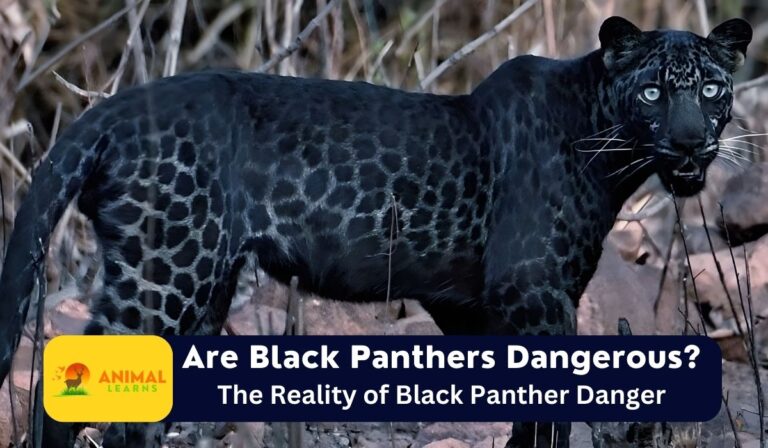Jaguar | Habitat, Lifestyle, Diet, Interesting Facts – Animallearns
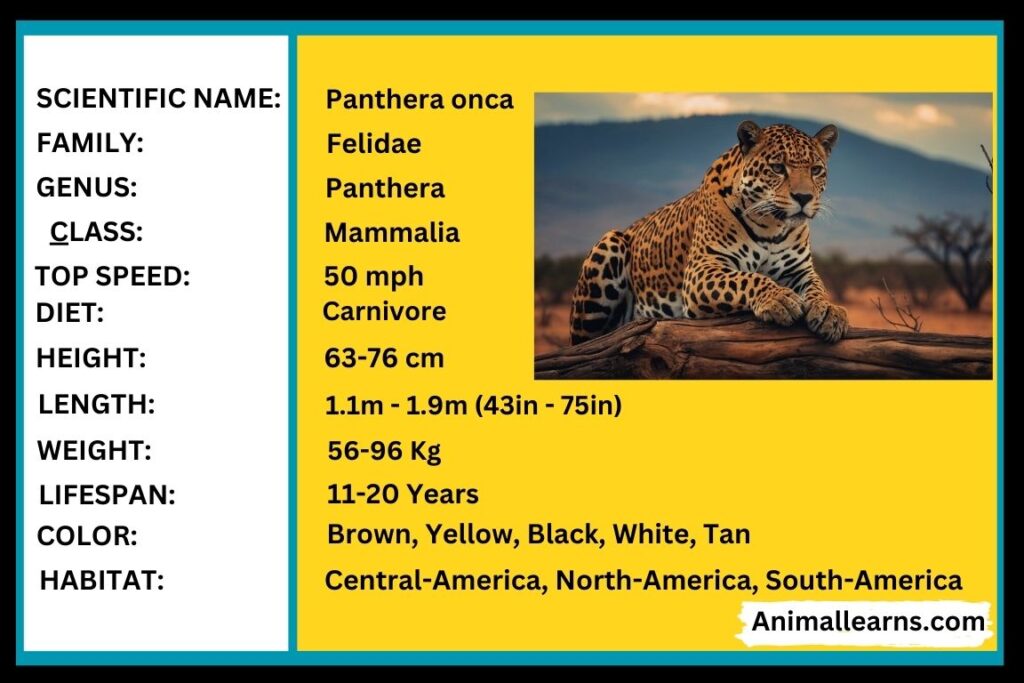
The sole extant member of the genus Panthera that is endemic to the Americas is the jaguar, or Panthera onca, a huge cat species. It is the third biggest cat species worldwide and the largest in the Americas. The mythology of the indigenous peoples of the Americas, notably the Aztec and Maya civilizations, has made significant references to the jaguar.
Jaguars and leopards are closely related and share many traits, such as the unique spotted pattern on their coats. The tiger and the lion are the two biggest cats in the world, with the jaguar coming in third. This stunning cat is very strong and agile.
As “he who kills with one leap,” the Native American phrase yaguar is really where the name Jaguar originates. Jaguars have been hunted throughout history despite their extraordinary prowess, mostly for their beautiful fur.
While it is now illegal to hunt jaguar fur, the species’ population has decreased across much of its native range, and in many places, jaguars have gone extinct.
Appearance
Contents
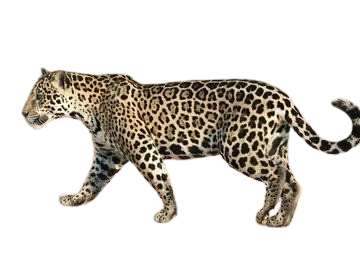
The jaws of a jaguar are strong, its head is broad, and its body is compact. The coat might be black or reddish brown, although it is typically yellow and tan. On its head and neck, the black dots on its coat are more distinct and grow into bigger rosette-shaped patterns on the sides and back.
Perhaps as a result of the dearth of big, herbivorous food in forest settings, jaguars who inhabit them are often darker and smaller than those who live in open spaces. After tigers and lions, jaguars have the third-highest biting force of any felid. They have strong jaws.
Distribution
| Geography | |
| CONTINENTS | South America, North America |
| SUBCONTINENTS | Central America |
| COUNTRIES | Colombia, Costa Rica, Ecuador, Guatemala, Argentina, Belize, Bolivia, Brazil, Guyana, Honduras, and more |
| BIOGEOGRAPHICAL REALMS | Neotropical, Nearctic |
| WWF BIOMES | Tropical savanna, Temperate broadleaf and mixed forest, Tropical dry forest, Tropical moist forests, Mangrove, Mediterranean forests, woodlands, Montane grasslands and shrublands, scrub, Temperate grasslands, Flooded grasslands and savannas |
Jaguars are found all over the world; they may be found in southern Arizona, New Mexico, northeastern Brazil, and northern Argentina. Populations in the United States, El Salvador, and several regions of Mexico have been substantially decreased, or in some cases, have completely vanished.
Jaguars may be found in reed thickets, scrublands, coastal forests, thickets, and swamps. They like dense, damp tropical lowland forests with lots of shelter.
They typically live close to bodies of water, including lagoons, swamps, rivers, slow-moving streams, and watercourses. They are excellent swimmers.
Comparison with other Animals
Habitat

More than any other large cat in the Americas, jaguars can move over a greater variety of environments, demonstrating their adaptability. Dense, shaded places near bodies of water, such as mangroves, swamps, and tropical rainforests, are their preferred den locations.
Additionally, they thrive in dry environments like grasslands, scrublands, and even deserts. Their range used to extend from Argentina to the southwest of the United States, but regrettably, habitat destruction has mostly restricted them to Central and South America, where the Amazon rainforest serves as their strongest hold.
Even though they may adapt to a variety of environments, dense foliage close to water sources is still essential for stalking, hunting, and rearing young.
Behavior and Lifestyle
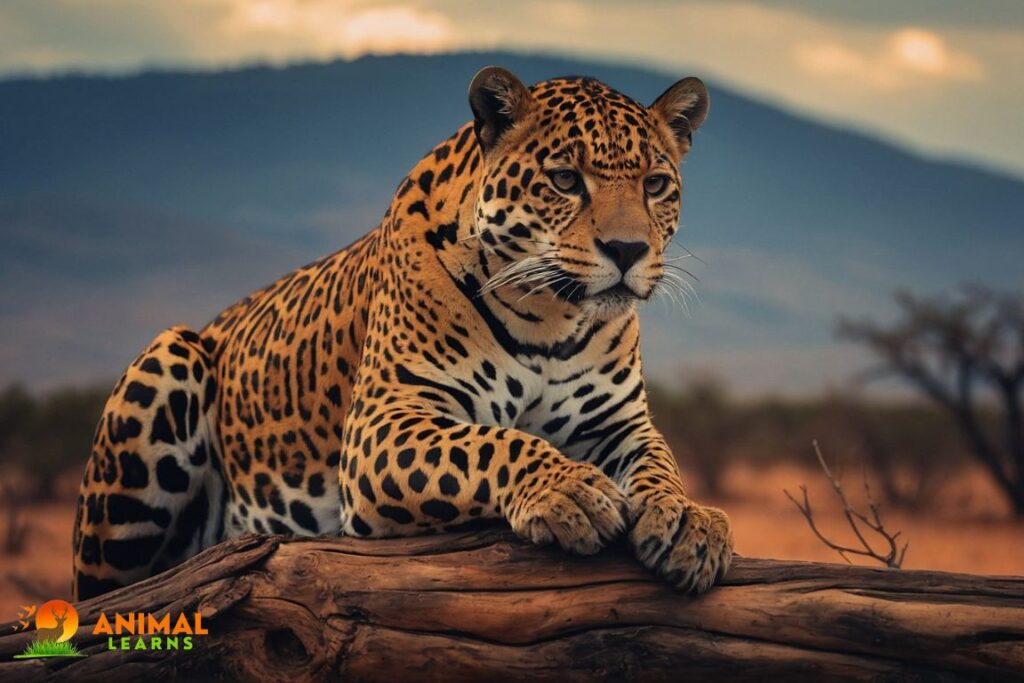
The jaguar is a shy animal that lives mostly in thick vegetation, either hunting in the deep shadows or sleeping in the shelter of trees. It has a characteristic that is uncommon among other cats: it loves to be near water, such as slow-moving rivers or floodplains.
Additionally, jaguars are uncommon in arid, desert-like environments. This cat can move quickly across the water in search of prey since it is a proficient swimmer. Apart from the initial years spent with its mother, the jaguar is a solitary animal, similar to many other cat species.
Males are very territorial, and although their home ranges may overlap with several females, they will tenaciously protect their patch from other males. Jaguars use urine to mark their territory by making scratches on trees and using their growling vocalizations to declare their dominance.
Reproduction and Life Cycles
Although certain litters of jaguars are known to be born at other times of the year, most jaguar cubs are born between December and March. The female Jaguar will produce loud vocalizations during mating season to get a male into her territory.
Typically, female jaguars have two or three babies. The female jaguar drives the male out of her domain as soon as the cubs are born and becomes fiercely protective of her offspring. Jaguar cubs are blind at birth and become sightless after approximately two weeks.
When they are around three months old, their mother weans them, and they will rely on her to hunt and take care of them until they are about six months old. After that, the Jaguar cubs will go hunting with their mother. When they are one to two years old, they will finally go hunting by themselves and set up their territories.
Diet and Nutrition
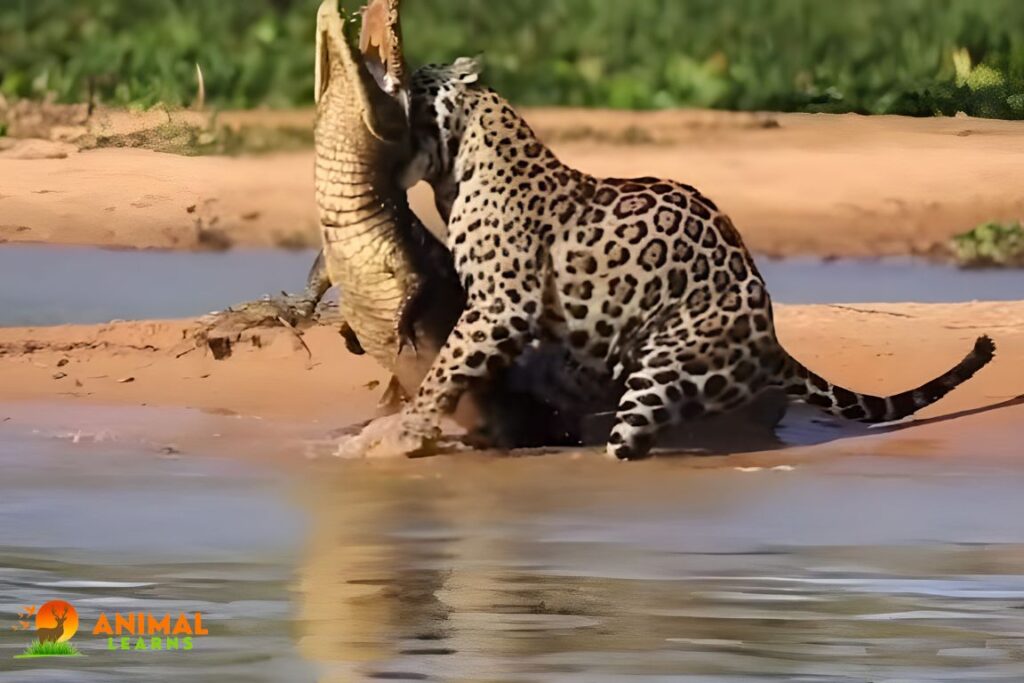
The majority of the medium-sized creatures that jaguars discreetly hunt through the dense forest are deer, capybara, tapirs, and peccaries. Jaguars hunt tiny caiman, fish, and turtles in the water. The jaguar is thought to consume more than 80 different animal species and is a fierce predator.
Predators and Threats
There are no other known wild animals that view the jaguar as prey because of its enormous size and domineering behavior. Originally widespread over the continent of South America, jaguar populations have drastically decreased due to human hunting, mostly for their fur.
Although they are now protected by law and there is less hunting for their fur, the jaguar is becoming more vulnerable due to habitat loss, primarily from deforestation for agriculture or expanding human settlements. This means that these magnificent and massive animals are being forced into more isolated areas of their original range.
Interesting Facts and Features
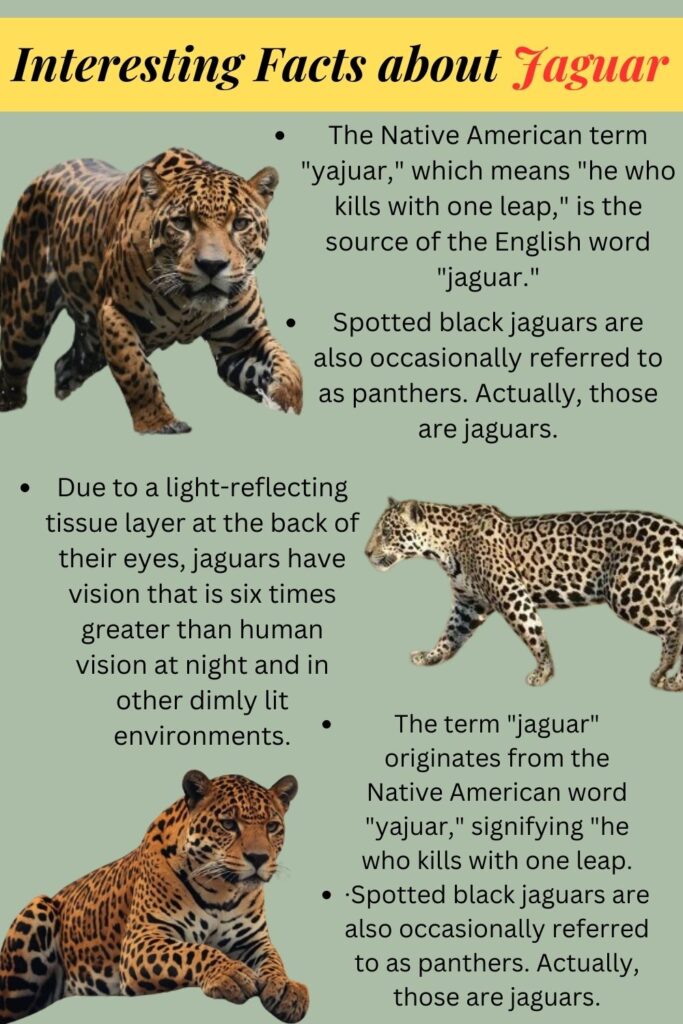
- The Native American term “yajuar,” which means “he who kills with one leap,” is the source of the English word “jaguar.”
- Due to a light-reflecting tissue layer at the back of their eyes, jaguars have vision that is six times greater than human vision at night and in other dimly lit environments.
- The term “jaguar” originates from the Native American word “yajuar,” signifying “he who kills with one leap.
- Spotted black jaguars are also occasionally referred to as panthers. Actually, those are jaguars.
- Jaguars use their tails to waggle above the water to entice fish.
- When hunting, the jaguar can plunge into the water.
- The jaguars found in woods are smaller, darker, and more slender than those found in open spaces.
- When consuming food, the jaguar begins at the neck and chest, in contrast to other felines.
Relationship with Humans
Since Native Americans were well aware of the might of this mighty predator and some even believed that the jaguar was the king of the underworld, jaguars have historically played a significant role in Native American culture.
People who live near jungles fear them, and ranch owners frequently blame them for the disappearance of their animals. Even though they have a reputation for being extremely hostile, jaguars seldom attack people without cause.
Deforestation, mostly for agricultural purposes, has negatively impacted jaguar populations over most of Central and South America; the Amazon Basin now hosts the greatest concentration of jaguars.
Status of Conservation and Modern Life
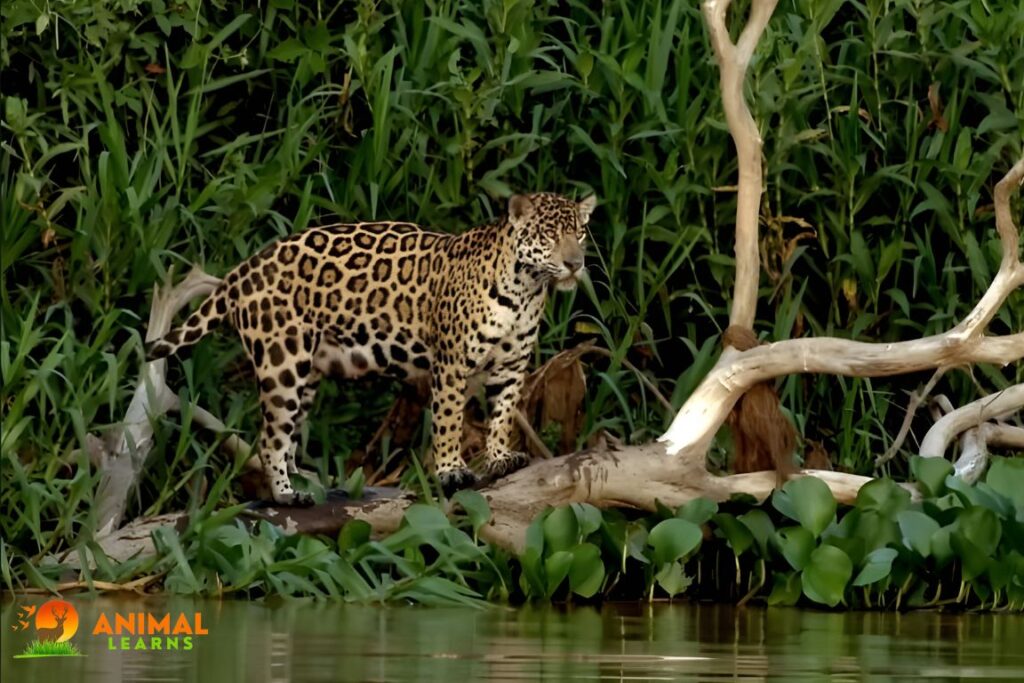
The jaguar was formerly widespread from the tip of South America up to and beyond the border between Mexico and the United States. However, habitat degradation and hunting for fur have resulted in sharp drops in the population.
Although the IUCN Red List lists the jaguar as an animal that is threatened in its native habitat, they are currently extremely rare to find in the United States and are protected as endangered throughout much of their territory. There are an estimated 15,000 Jaguars remaining wandering the jungle today, while the precise population size is unclear.
FAQs
Are jaguars friendly to humans?
Although they are not naturally hostile, jaguars are wild creatures and need to be handled carefully. Humans seldom interact with one another, and if they feel threatened, they may become protective.
Is the Black Panther a jaguar?
Yes, the black panther is a melanistic jaguar, which means that its black fur is the product of a genetic difference. Thus, it is only a color variation of the jaguar rather than a distinct species.
Is A jaguar A Tiger or a cat?
Both! All cats, including tigers, belong to the Felidae family, which includes jaguars. They are members of the Panthera genus of the Felidae family, which also includes tigers, leopards, and lions.
What is the jaguar’s biggest fear?
Jaguars are more afraid of human conflict and habitat degradation than of particular predators. Competition from other huge cats might also be a problem.
What are the 5 things jaguars eat?
Apex predators with a varied diet are jaguars. They eat a variety of species depending on availability, although they are flexible and opportunistic eaters that typically hunt fish, deer, capybaras, peccaries, and caimans.










